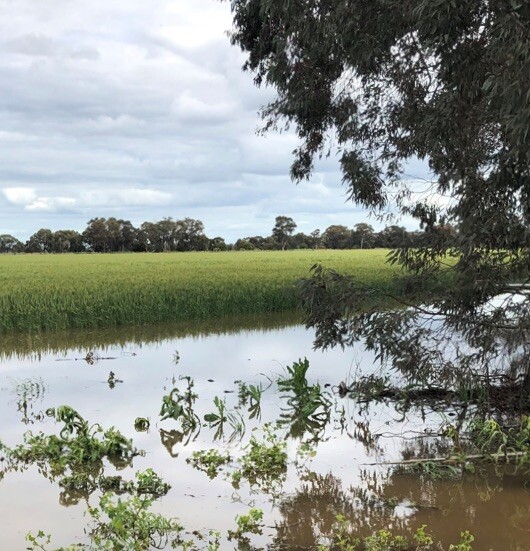Farm impacted by the wet weather? Take time with the big decisions
Given the significant flood and wind damage experienced across the Riverine Plains, complex decisions may need to be made about what to do with affected crops. This blog talks about taking the time to make informed good decisions under pressure.

Key messages
- Crops, pastures, livestock and infrastructure have been affected by wet conditions to varying degrees across the Riverine Plains
- The outlook may have now changed for farmers, leading to an increase in the number and complexity of decisions being made
- For complex decisions, take the time to make an informed and considered choice.
The wet conditions over the past few months, combined with some huge rainfall totals and strong winds over the past week, will be causing stress across our membership.
For some members, flooding and wind damage will have significantly impacted crops, pastures, livestock and buildings (in some areas, for the second year in a row), meaning there is much to do to at the moment to look after people, infrastructure and livestock. For those affected, there will be urgent, but relatively simple decisions to be made, like where to move livestock, how to access feed, how to clear debris etc.
Decision-making is more challenging when there are multiple factors to consider. In the context of this season, there now may be complex decisions around what to do with severely waterlogged crops, those affected by disease, or crops originally intended for hay/silage if the drying window is now looking dicey. This will be further complicated by expensive investments of fertiliser and other inputs already made this season. Options may include brown/green manuring, grazing crops, making silage, taking hay paddocks through to harvest or taking everything to harvest as planned.
How to make a good decision in response to the conditions
We were very fortunate to have Cam Nicholson (Nicon Rural Services) speak at the Riverine Plains Innovation Expo in July about on-farm decision making. One of Cam’s key messages was that decision-making is a skill that can be learned and improved with practice (while we make decisions all the time, it doesn’t mean we are good at it and this can complicate decision-making, especially when faced with stressful or overwhelming decisions).
A good, informed, decision is one that considers the information available at the time. With so many unknowns right now, using a decision matrix can help clarify the question you want answered (i.e. should I brown manure my pulse crop or purchase more stock to graze damaged crops), clarify when the decision needs to be made (timeliness) and determine the most important factors influencing the decision. The Southern Farming Systems website hosts the Decision Wizard decision matrix tool at https://decisionwizard.sfs.org.au/matrices#/decisions which could be a useful resource for farmers trying to work out what to do (or equally when making other big decisions).
Cam also reiterated that there will always be circumstances that weren’t known about ahead of time (like this rain) and which can’t be changed, so the best you can do is to make an informed decision with the information you have available and not be hard on yourself if it doesn't work out as you wanted. A big decision will always be made on balance; when all the factors line up, it’s easy; when they don’t it, becomes hard.
Sometimes decisions are made too quickly, so slowing down and applying a process to the decision-making (as in a decision matrix) can also result in better decisions.
Some decisions that might need to be made over the coming weeks
- Harvest access: consider installing tracks on headers and tractors/farm equipment to improve trafficability,
- Do roads and tracks might need to be reinforced with stones or gravel for better access?
- Is brown/green manuring, grazing or harvesting the best option for your crops?
- Can you still make good quality fodder?
- Does fodder now need to be sourced from elsewhere to meet livestock requirements?
- Is a review of insurance required considering changed yield estimates?
- Should the cashflow budget be reviewed?
- Livestock welfare: Can you manage hoof care (i.e. scald), worm burdens, bloat risk etc?
Consulting widely across your networks is helpful when grappling with difficult decisions, so speak to your agronomist, advisor, financial advisor, bank, stock agent or retailer for further advice.
Resources & further reading
Author
NEWS
Keep up to date with the latest news from across the Riverine Plains.
-
Livestock
-
People
-
Grains
-
Sustainability

